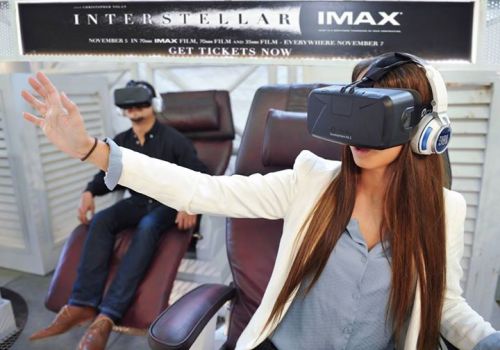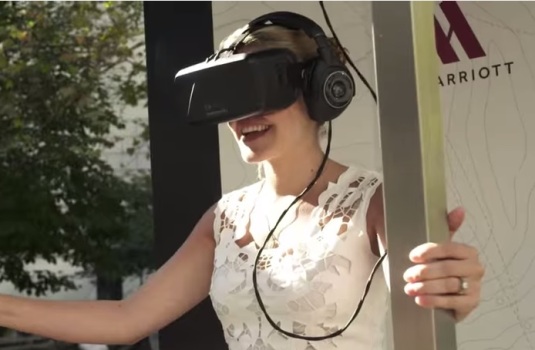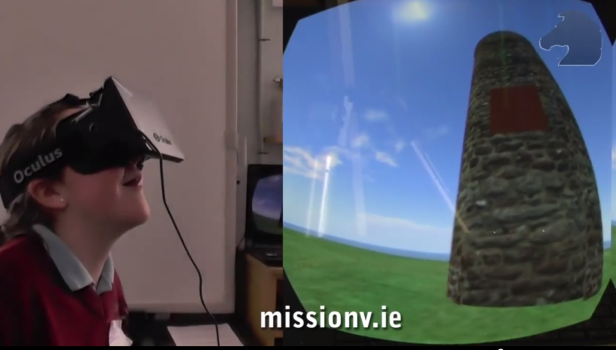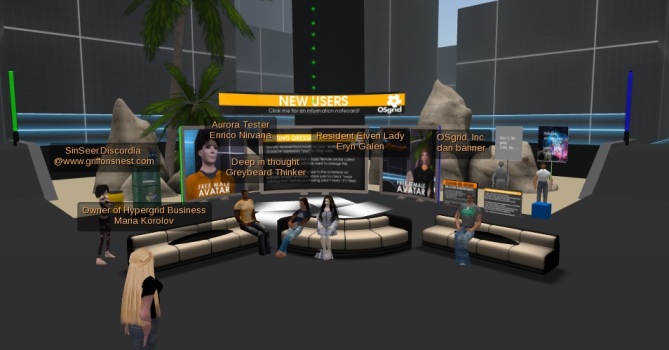Ready Player One is a best-selling novel by Ernest Cline set in the year 2044, a time when nearly the entire human population is tapped into a metaverse called The Oasis. There’s also a movie currently in development.
The book is a love letter to 1980’s culture, but it still paints an extremely detailed image of what a future virtual reality metaverse might look like. Not everything about this fictional future is positive, but it does hold many great ideas for the day to day use of future virtual reality tech, and their implications.
Here are the top five ideas I want to see from Ready Player One’s in our own metaverse.
1. Movie simulations
This is a feature that could only exist in a future with insanely powerful computers and massive budgets. Perhaps larger budgets than the initial movies themselves.
Imagine if you had the ability to act out your favorite movies as the lead character, getting points every time you nailed a line, or hit your action cue? In Ready Player One, Wade Watt has to get a high score by acting out Matthew Broderick’s part in WarGames. He talks with virtual versions of all the movie’s characters, and they react to him. The closer he stays to the script the higher the score, with bonus points for doing the proper accents and phrasing. We have some of this in a very basic stage with extremely linear video games, but nothing where you’re actually moving your hands and using your voice, in fully simulated movie settings. It’s a whole new level of immersion.
Given how saturated the current movie industry is with remakes and reboots, it isn’t a big jump to think movie studios would flock to this technology, as a way to make up for shrinking ticket sales. Studios are already embracing virtual reality experiences, recent examples being Pacific Rim and Game of Thrones. If Hollywood studios threw their full weight behind this technology, there’d be room for more than just reenactment. Virtual sequels, or even choose your own adventure versions of popular movies could be developed.

This kind of tech will take massive budgets, but I’m sure as soon as somebody pitched the idea and value of being able to live through the Death Star trench run from Star Wars, investors and executives would be all ears. Even further, I imagine the number of customers interested in exploring a fully realized simulation of The Shire from Lord of the Rings is not small. But that might be closer to the next idea…
2. Virtual tours
Kids who study history in 2040 have virtual tours worked into their curriculum. The location featured in the book is a tour of King Tut’s partially excavated tomb, circa 1920. The applications of this idea are nearly limitless.
Those without the physical or financial means to travel would be able to see wonders of the world as if they were standing there in person. A company could even build phases of a location, so a person could watch an ancient city age and become a ruin before their eyes. They could see how the walls of Constantinople evolved as threats and technologies changed, and then see it get swallowed into the modern city of Istanbul.

This kind of technology would not only be useful, but extremely profitable. Tut’s Tomb, for example, could continue to be preserved and studied by scientists, without interference or vandalism from tourists, but Egypt could still profit off it by selling virtual tours. A country wouldn’t have to choose between preservation of their heritage and potential profit. For those that still want to see and touch a piece of history, the sites would now potentially be a little less crowded.
This kind of visual immersion also helps get ideas across so much more clearly than text ever could, helping people to better understand history and culture. It would save schools the financial and logistical nightmare of transporting students across country to learn. And on the subject of schools…
3. Virtual classrooms
While schools might not be the most exciting subject, they might be one of the most directly beneficial ideas. While in Ready Player One, physical schools still existed, virtual schools were a legitimate alternative.
Those that couldn’t physically attend school were able to experience something very close to the real thing. Students in the metaverse sat in a desk, surrounded by other avatars, walked the halls, kept lockers, and even had after school sports they could attend with friends.
They could get the full social and educational experience of a brick and mortar classroom, at a much smaller cost. There was no virtual scarcity for online school supplies, which meant people living in impoverished areas could still get the same quality of education as those in richer neighborhoods. There was never danger of a building being too full, no fear of running out of paper, ink, or using outdated textbooks. And being able to block people from communicating with you, and totally change your avatar’s appearance, mitigated some of the classic forms of bullying.

Best of all, the government issued networking hardware to the students to access the Oasis. Which means everyone across the country has government subsidized access to the internet, the Oasis, and all the knowledge and experiences within. Those in lower social classes could use the free knowledge and resources to help even the playing field. Which, is exactly what allows the book’s main character to rise above his rivals, despite his poor upbringing.
5. Virtual hangouts and hideouts
Cline does a good job of taking ideas that already exist in our world and blowing them out to future proportions. His version of virtual hangouts is no exception.
We’ve had this feature in primitive form since we’ve had networked computers, and they’ve never stopped being popular. From BBS modems back in the 80s to the shared world MMORPGs of today, people have always loved creating their own space to spend time with friends. Years ago, my friends and I would log into an online game, and sit in an abandoned house just to chat and play games “in person,†while already logged into a game.

In the Oasis, that idea is taken to the next level. Every avatar can create their own private spaces and allow who they want inside. The hangout in the story is decorated with virtual representations of 80s movie posters, functional pinball and arcade machines, and a TV to watch movies on. Even in an age of virtual entertainment, there’s still value in sitting on a couch and watching something with friends. It was even possible to find and occupy abandoned areas and planets, creating a kind of club house or base, designed to look however the founder chose.
5. Freedom from corporate corruption
Unlike other items on this list, this is a philosophy rather than a feature. It’s also probably one of the most far-fetched scenarios in the entire book. In the fictional future, the Oasis has become a way of life for virtually everyone on the planet. It is so entrenched in people’s lives, and so far ahead of the competition that it is essentially a monopoly. But the direction and features of the Oasis are still largely controlled by the taste of the two people who invented the system. Somehow they managed to become a global megalithic company, without losing their creative integrity or control of their creation.
The closest parallel we have in our world, is the story of the Oculus Rift. Oculus started as an exciting indie project, funded through Kickstarter on the dreams of engineers, scientists, and consumers. When Facebook bought Oculus, there was a massive outcry of anger from the virtual reality community. Some felt betrayed and feared Oculus was going to abandon the indie scene that helped get it off the ground.
So far, that hasn’t been the case. In fact, the funding from Facebook has allowed Oculus to attract the best and brightest to their banner, and helped ensure we’re going to get the best possible virtual reality experience. It makes you wonder how the Oasis managed to become what it is without being bought out somewhere along the way.
The fear that Oculus will become a corporate machine still exists, but so far Facebook seems to be handling things well. They’re attracting talent and letting them do what they know best. Whichever virtual reality system becomes the dominant one, we hope it will stay indie in spirit, like the Oasis.
- 5 great ideas from Ready Player One - February 27, 2015
- OSCC14: Comfort key to VR success, says Oculus scientist - November 14, 2014
- Why Gear VR benefits Oculus more than Samsung - September 24, 2014
